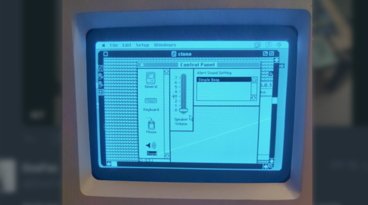WebKit adding support for GPU-accelerated 3D via WebGL
According to a report posted by a developer on the Wolfire Blog, WebGL provides HTML5's Canvas with hardware accelerated 3D rendering features by adding a JavaScript binding for OpenGL ES 2.0, enabling web developers to present 3D scenes and models that tap the full native processing power of the client's graphics hardware.
The open, royalty-free WebGL specification is administered by the Khronos Group, the same organization that manages OpenGL and the new OpenCL API for cross-platform and GPU vender-neutral general purpose computing on GPU hardware.
Being able to render rich 3D content on the web without a proprietary, opaque binary runtime plugin such as Adobe Flash or Microsoft's Silverlight means that any standards-based device can be targeted by web games developers, from a desktop web browser to a mobile device like the iPhone. The technology can also be used to animate complex navigation and data visualizations.
Earlier this summer, WebKit added support for CSS 3D transforms, which allow web developers to position page elements in a 3D space. Apple rapidly added support for that feature in iPhone 2.0 and Safari 4.0.
Support for WebGL's hardware accelerated 3D rendering is likely to be similarly exposed within desktop and mobile versions of Safari over the next few months, opening up new potential for increasingly sophisticated web apps and rich media content. A public release of WebGL is scheduled for the first half of 2010.
Google, Mozilla, Opera and various GPU hardware vendors have joined in on the industry consensus to deliver advanced 3D web graphics using open standards, building support behind the Khronos portfolio of technology specifications.
 Prince McLean
Prince McLean







 Amber Neely
Amber Neely
 Thomas Sibilly
Thomas Sibilly
 AppleInsider Staff
AppleInsider Staff
 William Gallagher
William Gallagher
 Malcolm Owen
Malcolm Owen
 Christine McKee
Christine McKee










18 Comments
Interesting. So we might finally have a new and better system than Flash and that horrid Silverlight.
Should be good for Wikipedia, they could have 3d spinning molecules and such.
Sounds good for web-developers who makes iPhone compatible websites...
A knife right in flash/silverlights heart .Live free under a msft free sky
Go apple .
Should be good for Wikipedia, they could have 3d spinning molecules and such.
Not really. Microsoft won't be supporting this anyway and the web will always remain stuck at whatever MS chooses to implement in IE.